
Historical films, especially biopics, are often lauded for bringing incredible life stories to the big screen, allowing us to connect with figures from the past or understand pivotal moments in history. They promise a glimpse into the lives of extraordinary individuals, captivating us with tales of triumph, struggle, and human drama. But here’s the kicker: how much of what we see is actually, genuinely true?
It’s a tricky tightrope walk for filmmakers. They’re tasked with condensing entire lives or complex events into a digestible, entertaining format, and sometimes that means taking a few “creative liberties.” The problem arises when these liberties aren’t just minor tweaks but complete overhauls, turning real history into little more than a colorful fairy tale. It’s particularly dangerous when audiences, without a deep history background, absorb these cinematic narratives as the undeniable, gospel truth.
We’re about to pull back the curtain on some of Hollywood’s biggest offenders. Get ready, because we’re looking at 14 biopics that didn’t just bend the truth – they absolutely butchered it. Their real-life subjects, if they were around today, would likely be appalled by how their stories were twisted and sensationalized. Let’s dive into the first batch of films that took a chainsaw to historical accuracy!

1. **Pocahontas: Disney’s Historical Whitewash**
Disney’s “Pocahontas” is a classic for many, with its iconic songs and vibrant animation. While most don’t usually consider it a historical biopic in the traditional sense, it’s startling how completely it ignores real history. And that’s where the danger lies, especially because it’s a children’s movie. Youngsters can easily grow up believing that the romanticized Disney version is the actual, factual story of Pocahontas.
The primary issue, and perhaps the most glaring, with Disney’s portrayal is its full-throttle romanticization of the story. They literally put a romantic spin on a relationship that was anything but. The real Pocahontas met the real John Smith in 1607. Here’s the critical detail: at their first meeting, Pocahontas was a mere 10 or 11 years old, while John Smith was a full-grown 27-year-old man.
Historically speaking, Pocahontas’s role was far more diplomatic. She served as a liaison between the British colonists and the Powhatan Chiefdom. Any actual romance between the real Pocahontas and John Smith would have been extremely inappropriate and, frankly, quite troublesome for many reasons beyond just the age gap. The film completely glosses over these uncomfortable truths to deliver a more palatable, albeit fictional, love story.
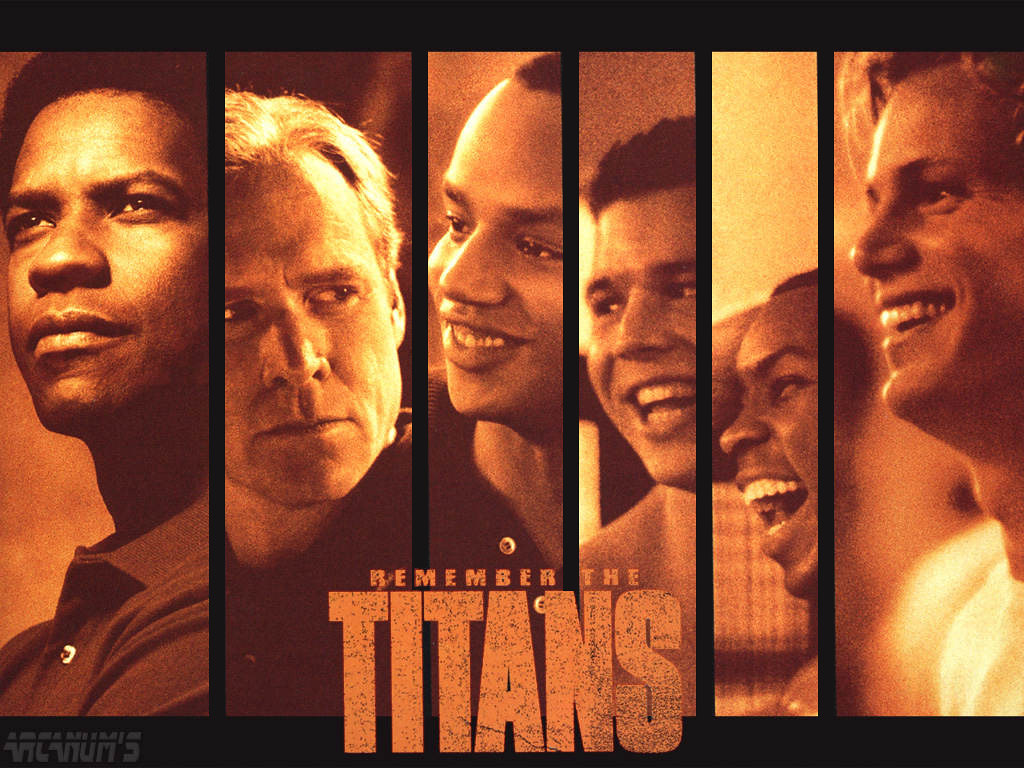
2. **Remember the Titans: Exaggerating Racial Tensions for Drama**
The 2000 movie “Remember the Titans” is celebrated as an inspiring sports drama, loosely based on the true story of T.C. Williams High School in Alexandria, Virginia. A huge chunk of the film focuses on the dramatic integration of the school in 1971, depicting extreme racial tension permeating every aspect of the football team. It’s a powerful narrative, no doubt, but one that significantly distorts the actual timeline.
In reality, T.C. Williams High School had already been integrated way back in 1965. By the time the movie is set in 1971, the school had been integrated for six years. This means that while racial tensions were undoubtedly still present in Virginia at that time, the football team itself wasn’t experiencing the kind of raw, immediate racial conflict the movie so vividly portrays. “Remember the Titans” largely exaggerates these tensions, cranking up the drama to create a more compelling, but less accurate, cinematic experience.
And the embellishments don’t stop there! Take the character of Gerry Bertier, for example. In the film, his paralyzing car accident happens *before* the 1971 season, adding a layer of adversity that the team must overcome. The truth? That accident actually occurred *after* the 1971 season. Furthermore, the Titans weren’t the plucky underdogs the movie makes them out to be. Their real 1971 season was dominant, featuring nine shutouts and a commanding 27-0 state championship game win. Part of their real-life dominance stemmed from T.C. Williams being comprised of three high schools in Alexandria, giving them a massive talent pool to draw from, a detail conveniently overlooked by the film.
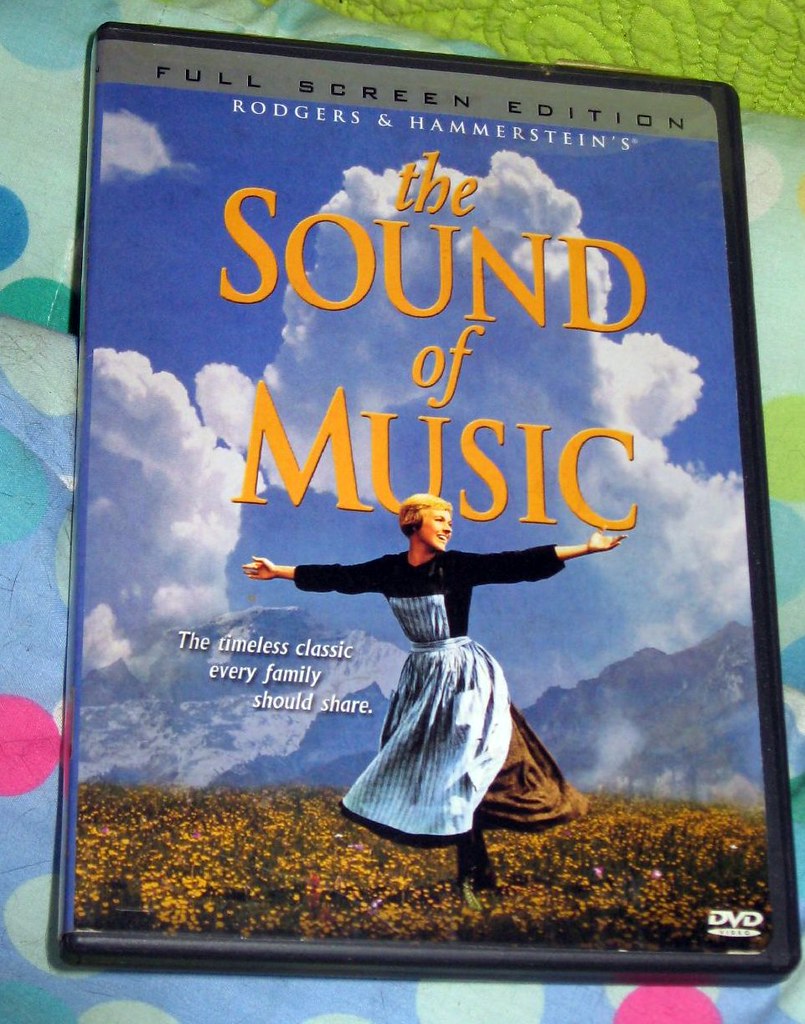
3. **The Sound of Music: Our Favorite Musical, Many False Notes**
“The Sound of Music” holds a special place in the hearts of millions, and learning that it isn’t entirely historically accurate can really sting. This beloved musical was based on “The Story of the Trapp Family Singers,” a book published by the real Maria von Trapp in 1949. While the core story is there, many details were altered, seemingly for dramatic effect, but at the cost of historical truth.
For starters, the real Maria von Trapp was initially sent to tutor only *one* of Baron Georg von Trapp’s children, not all of them as depicted in the movie. This changes the dynamic of her entry into the family significantly. Beyond that, the real Trapp family actually began singing and performing publicly in the mid-1930s, a good deal earlier than the movie portrays, which places their public debut right before the start of the Second World War.
Perhaps the most glaring historical inaccuracy involves their famous escape from Austria. The movie shows the family scaling the majestic Swiss Alps to freedom, a truly cinematic moment. In reality, their escape was far less dramatic and perilous. The family simply boarded a train in broad daylight, traveling to Italy. Had they actually scaled the Alps in the direction shown, they would have crossed directly into Nazi Germany, not the neutral Switzerland, which was a whopping 200 miles away. Oh, and about Maria’s temperament? Joan Gearin of the National Archives states, “the real-life Maria wasn’t always as sweet as the fictional Maria. She tended to erupt in angry outbursts consisting of yelling, throwing things, and slamming doors.” Sounds like Julie Andrews’s version got a serious sugar-coating!
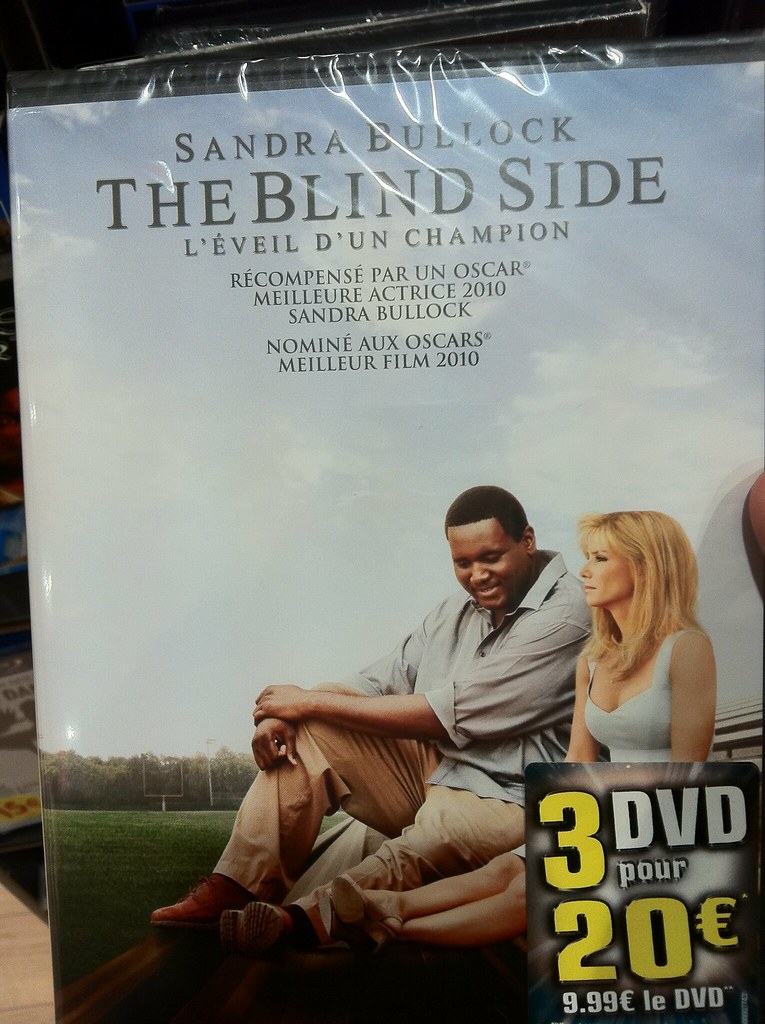
4. **The Blind Side: An Academy Award Winner Built on Shaky Facts and Legal Drama**
“The Blind Side” (2009) captured hearts and even earned Sandra Bullock a Best Actress Academy Award for her portrayal of Leigh Anne Tuohy, with the film itself snagging a Best Picture nomination. It was presented as a heartwarming true story of adoption and overcoming adversity. However, beneath the accolades and emotional resonance, “The Blind Side” is far from historically accurate, and its subject, Michael Oher, has been vocal about his dissatisfaction.
The real Michael Oher didn’t just dislike his portrayal; he feels the movie actively *hurt* his NFL career. In 2009, he told ESPN reporter David Newton, “People look at me, and they take things away from me because of a movie. They don’t really see the skills and the kind of player I am. That’s why I get downgraded so much, because of something off the field.” Oher felt the film caused people to hold him to an unrealistic standard, saying, “This stuff, calling me a bust, people saying if I can play or not… that has nothing to do with football. It’s something else off the field. That’s why I don’t like that movie… That’s why people criticize me. That’s why people look at me every single play.”
One of Oher’s main grievances was the movie depicting him as unintelligent, a portrayal that doesn’t align with reality. While it’s true Oher had an incredibly difficult early life – dealing with his father’s murder, homelessness, and a mother struggling with drugs and alcohol, alongside racial tensions – the movie oversimplified these struggles. It didn’t delve into them with the depth Oher would have preferred. The film also ignored the complexities within the Tuohy family and Oher’s relationship with them, including initial doubts about his adoption and instances where the real Tuohy family could exhibit racist behaviors.
In a shocking turn of events in 2023, the real Michael Oher revealed that Leigh Anne and Sean Tuohy allegedly lied about adopting him. Instead, he claims he was made to sign papers establishing the Tuohys as his conservators, reportedly told there was “no consequential difference between being adopted and entering into a conservatorship,” as reported by People Magazine. Oher alleges that the Tuohys reaped millions from this conservatorship, which included stipulations like him “shall not be allowed to enter into any contracts or bind himself without the direct approval of his conservators.” Adding insult to injury, Oher discovered after the film’s wild success that he was the only family member *not* receiving reality checks from the movie, despite it being about his life. This really makes you question the “feel-good” narrative, doesn’t it? The movie also minimizes Oher’s innate talent and hard work, instead focusing on the idea that his adoptive parents were solely responsible for his football success, ignoring the scouts who had been following him long before the Tuohys.

5. **Bohemian Rhapsody: Queen’s Legacy, Sanitized and Rewritten**
“Bohemian Rhapsody” (2018) aimed to celebrate the legendary Freddie Mercury and the iconic band Queen, but it sailed into controversy due to its historical inaccuracies. What’s truly interesting is that many of these changes were made to present a more “PG rated” version of Mercury’s actual life. In fact, actor Sacha Baron Cohen, originally slated to play Mercury, dropped out precisely because the project wasn’t “R-rated” enough for his vision.
Sacha Baron Cohen reportedly wanted the film to explore the darker, wilder sides of Mercury’s life, including stories like “little people with plates of cocaine on their heads walking around a party.” However, the surviving members of Queen, who held the rights to the story, desired a more family-friendly portrayal to “protect their legacy as a band,” leading to Cohen’s departure and a heavily sanitized script. This choice fundamentally altered the narrative, presenting a less complex and arguably less authentic version of a rock icon.
Beyond toning down Mercury’s lifestyle, “Bohemian Rhapsody” also played fast and loose with key events. Mercury was *not* the first Queen member to release a solo project, making that whole subplot entirely fictional. The film dramatically portrays Live Aid as a reunion concert, with the band members supposedly not speaking for years and Mercury revealing his HIV diagnosis during rehearsals for the show. In reality, Live Aid was *not* a reunion; Queen had been actively touring “The Works” globally right up until eight weeks before the concert offer. Moreover, Freddie didn’t even know about his HIV status until 1986 or 1987, well after Live Aid in 1985. The filmmakers clearly prioritized dramatic and inspiring purposes over factual accuracy, even going so far as to falsify his family background and present a problematic representation of Paul Prenter.

6. **JFK: Oliver Stone’s Conspiracy Theory Showcase**
Oliver Stone’s “JFK” (1991) stands out as one of the most historically inaccurate biopics ever made, essentially serving as a three-hour and 26-minute platform for conspiracy theories. The film’s controversial opening sets the stage, mixing real footage with fictional scenes in a documentary-montage style, subtly claiming a level of accuracy that simply isn’t there. This blending of fact and fiction is a dangerous tactic, especially when dealing with such a pivotal and debated moment in American history.
The movie centers on New Orleans district attorney Jim Garrison, played by Kevin Costner, as he builds a case around JFK’s assassination. In Stone’s narrative, Garrison “uncovers” a vast plot within the American government to kill Kennedy, implicating the CIA, FBI, and American military. It’s a gripping tale, full of intrigue and suspense, but its foundation crumbles under historical scrutiny.
The critical issue with “JFK,” beyond its complete fabrication of these grand conspiracies, is the profound impact it had on public perception. A significant portion of the American public continues to believe in the JFK assassination conspiracy theory, and this film undoubtedly fueled those beliefs. Because Oliver Stone’s “JFK” presents itself with an almost documentary-like veneer, it became far too easy for viewers without proper historical background knowledge to get completely sucked into these elaborate, and ultimately false, theories, cementing misinformation in the public consciousness.

7. **The Greatest Showman: A Sugar-Coated Saga of Exploitation**
“The Greatest Showman” (2017) dazzled audiences with its vibrant musical numbers and inspirational rags-to-riches story of Phineas Taylor “P.T.” Barnum, who starts a circus to provide a better life for his family. It presents Barnum as a visionary, someone who genuinely cared about the “oddities” and performers in his troupe. It’s a feel-good spectacle, but one that sugarcoats many, many aspects of Barnum’s true life, which was considerably darker than the movie lets on.
The reality of P.T. Barnum is far more chilling. Growing up in the antebellum north, Barnum, at just 25, purchased the “right” to “rent” an elderly Black woman named Joice Heth. He then notoriously marketed Heth as George Washington’s 161-year-old nurse, a blatant lie. His exploitation didn’t end with her life; after she passed away in February 1836, Barnum hosted a live autopsy in a New York Saloon, where 1500 spectators paid 50 cents each to witness her body being dissected. This is a far cry from the benevolent showman portrayed by Hugh Jackman.
The film conveniently glosses over Barnum’s penchant for exploiting people’s physical disabilities and even animals. At Barnum’s American Museum, he had an exhibit featuring a caged human being marketed as “the connecting link between man and monkey,” with the unsettling tagline “What is it?” And let’s not forget his less-than-ethical acquisition methods, like chartering a ship to steal elephants from their natural habitat in Sri Lanka. The movie even incorrectly portrays Tom Thumb as a 22-year-old when he started touring under Barnum, when he was, in fact, just five years old. Jenny Lind, another key character, quit Barnum’s employ because she was sick of his relentless greed, not because he rejected her advances. “The Greatest Showman” is a masterclass in turning a shyster and conman into an empowering musical hero, perhaps even conning its audience much like Barnum conned his own.
Alright, buckle up, movie buffs, because we’re not done pulling back the curtain on Hollywood’s wild historical fabrications! We’ve already seen how some biopics took a chainsaw to the truth, but trust me, there’s more where that came from. It’s time to dive into another batch of films that played fast and loose with reality, leaving their real-life subjects, and history itself, shaking their heads. Get ready for some serious truth bombs!

8. **Rudy: The Myth of the Underdog Sack**
Who doesn’t love a good underdog story, right? “Rudy” has long been hailed as one of the most heartwarming sports movies ever crafted, inspiring countless viewers with its tale of Daniel “Rudy” Ruettiger’s improbable journey to play for Notre Dame. It’s a classic, feel-good flick that seems to capture the essence of perseverance and triumph against all odds. But, much like a tricky defense, this movie is full of embellishments and inaccuracies that might just surprise you.
The most iconic, memorable scene, and frankly, the emotional core of the entire film, is when Rudy finally gets his chance to play for Notre Dame in a game against Georgia Tech. The crowd, allegedly, is chanting his name, he makes an incredible sack, Notre Dame wins, and he’s then carried off the field by his jubilant teammates. It’s the stuff of legends, a moment that makes you want to stand up and cheer.
However, football legend Joe Montana, who actually was a teammate of the real Daniel “Rudy” Ruettiger, has since gone on record to set the historical record straight. Get this: according to Montana, the crowd wasn’t chanting Rudy’s name, he didn’t throw in his jersey, and he definitely wasn’t carried off the field in a moment of pure, unadulterated triumph by his genuinely admiring teammates. Nope, Montana clarifies that he “got carried off by three of the biggest pranksters on the team.” Can you believe it?
It’s truly a heartbreaking revelation, isn’t it? One of the most emotionally charged and universally loved scenes in cinematic sports history turns out to have been a big joke orchestrated by a few mischievous teammates. This completely changes the context of Rudy’s supposed moment of glory, transforming it from a heartfelt display of respect into a lighthearted, if somewhat cynical, prank. It just goes to show you that even the most inspiring stories can have a few creative liberties woven into their fabric.
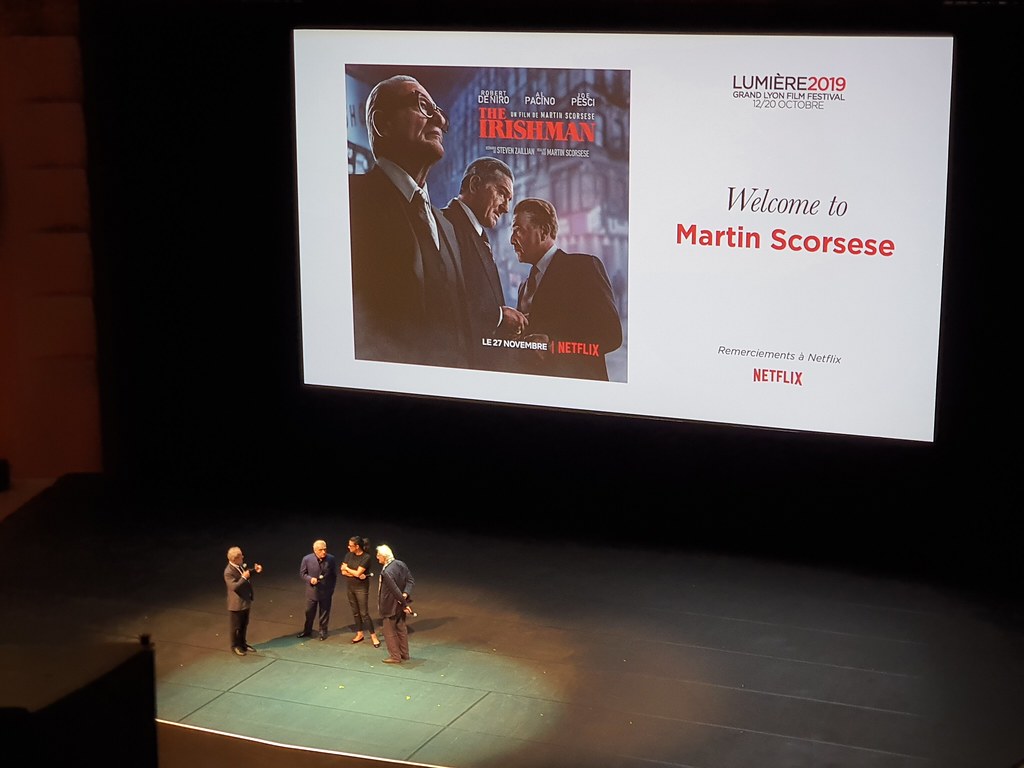
9. **The Irishman: A Hoffa Mystery That Remains Unsolved**
Martin Scorsese’s “The Irishman” (2019) captivated audiences with its sprawling narrative of Frank Sheeran, a hitman who claims to have worked for the Bufalino crime family and, most notably, was allegedly involved in the disappearance of Teamsters leader Jimmy Hoffa. The film, based on Charles Brandt’s nonfiction book “I Heard You Paint Houses,” presents itself as a definitive, long-awaited solution to one of America’s most enduring mysteries. It’s a gripping, star-studded epic, but here’s where we hit a snag.
The movie confidently asserts that Sheeran was the one to finally put an end to the enigmatic disappearance of Hoffa, seemingly providing the last word on a decades-old puzzle. The problem? There is absolutely no way to corroborate this story. None. It’s a sensational claim that, unfortunately for history buffs and truth-seekers, lacks any verifiable evidence outside of Sheeran’s own testimony in Brandt’s book.
In fact, far from settling the debate, the film’s premise has been met with significant skepticism and outright debunking from numerous experts. Jack Goldsmith, a Harvard Law School professor, and Andrew Sluss, the case’s lead FBI investigator, are just a couple of the respected figures who have publicly come forward to challenge the claims made in the book and, by extension, the film. They contend that there is simply no proof to back up the assertions.
It’s a huge point, and it fundamentally undermines the film’s central narrative hook. Despite the cinematic grandeur and compelling performances, there is still no concrete proof that Frank Sheeran killed *anyone*, let alone the famously disappeared Jimmy Hoffa. So while “The Irishman” makes for a thoroughly entertaining and dramatic legend, a legend it may very well remain, rather than the historical record it purports to be.
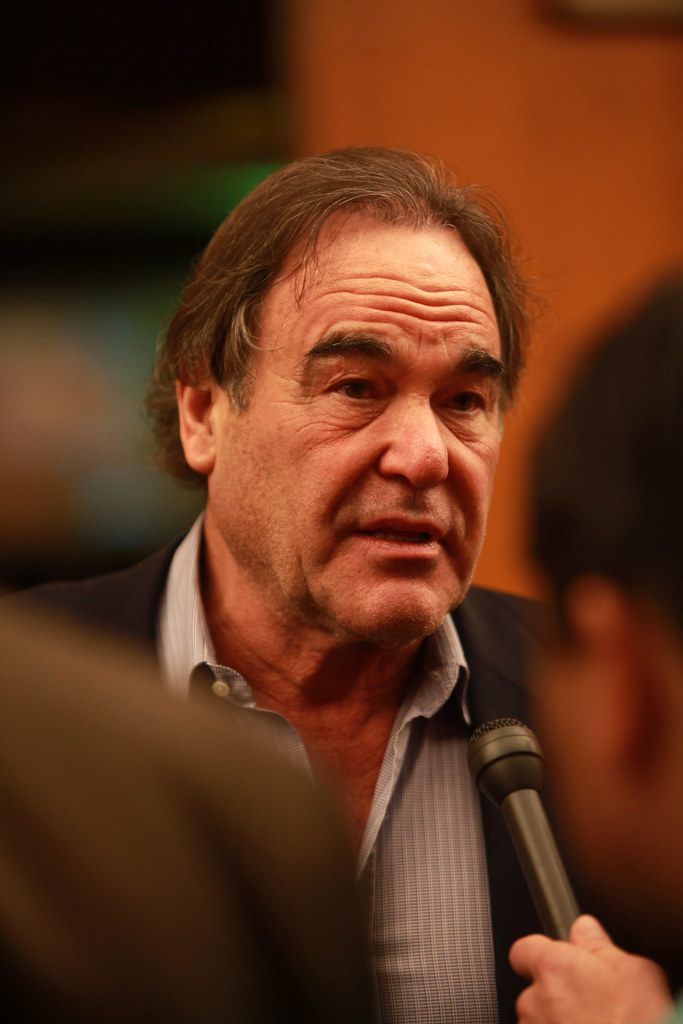
10. **Alexander: Oliver Stone’s Epic Disregard for History**
Seriously, when are we going to get a truly accurate and gripping film about Alexander the Great? Director Oliver Stone’s “Alexander” (2004) tried to tackle the monumental task, and to his credit, he openly admitted that he intentionally ignored historical accuracy for the sake of dramatic storytelling. While that’s a rare moment of honesty in Hollywood, it doesn’t quite excuse the sheer number of historical inaccuracies that seriously ticked off historians and audiences alike.
The movie is so riddled with historical blunders that it’s tough to know where to begin. One of the most glaring issues is the problematic depiction of the Persians. The film portrays them as disorganized, turbaned, and even speaking Arabic, which is simply not true. In reality, the Persian Empire at that time was one of the most advanced and sophisticated civilizations in the world, certainly not a band of unhygienic, disorganized dullards as depicted. This kind of misrepresentation is not just inaccurate; it’s genuinely problematic.
The embellishments continue with the characters and key events. Some characters, for instance, are shown as much younger than they actually were in real life, distorting historical timelines and relationships. Key battles are either mixed up or ignored entirely, robbing viewers of the true strategic brilliance and brutality of Alexander’s campaigns. And let’s not forget how the movie largely overlooked the admirable and crucial relationship between Alexander and Porus, a pivotal aspect of his military career.
Adding to the list of historical gripes, historians were particularly bothered by the casting of Rosario Dawson as Alexander the Great’s Iranian wife. One historian vividly critiqued this choice, likening it to “…having Lucy Liu portraying Queen Victoria of Britain.” This kind of casting decision, alongside the general disregard for cultural and historical nuances, really solidifies “Alexander” as an epic that prioritizes sensationalism over the rich, complex tapestry of actual history.
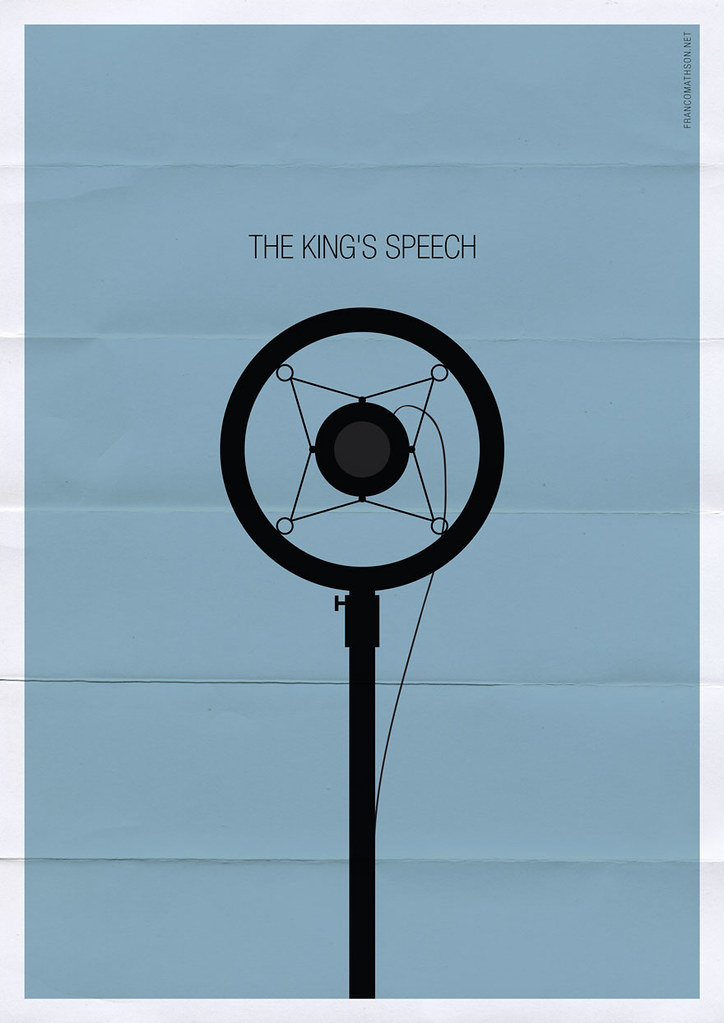
11. **The King’s Speech: A Stammer That Wasn’t So Significant**
“The King’s Speech” (2010) charmed audiences and critics alike, winning numerous awards for its compelling story of King George VI overcoming a debilitating stammer with the help of unconventional speech therapist Lionel Logue. The title itself suggests a monumental struggle, centralizing the King’s impediment as the defining challenge of his reign. It’s a powerful narrative about finding one’s voice under immense pressure, but guess what? The key problem at the heart of this story is, for the most part, largely fictional.
While it’s true that King George VI did have a slight stammer, and yes, he did seek the counsel of Lionel Logue to address it, the film significantly exaggerates the severity and duration of his struggle. In reality, their work together began in 1926. And here’s the kicker: by 1927, a full twelve years *before* the declaration of war that serves as the film’s dramatic climax, King George was already giving clear and resonant speeches. This completely undermines the movie’s central dramatic tension, which suggests a last-minute, heroic struggle.
Furthermore, the characterization of Logue himself was largely fabricated for cinematic effect. The film portrays him as a brusque, informal therapist who famously calls the King “Bertie” and is prone to swearing. However, the real Lionel Logue never swore or used such informal address with the King, painting a very different picture of their professional relationship. The movie clearly took extensive liberties to create a more engaging, if less accurate, dynamic between the two men.
The movie also portrays King George’s stutter as a monumental impediment, one that seemingly prevented him from fulfilling his royal duties. In reality, the King’s stutter was “of little importance or concern to anyone,” according to historical accounts, as he could deliver an entire speech with no stutter if he concentrated. Other characters weren’t spared from dramatic overhaul either, with Edward VIII portrayed as a bully, and the duke and duchess as spoiled dolts. As one critic at The Collider humorously put it, it’s “like if James Cameron had a pterodactyl sink the Titanic instead of an iceberg” – a clever way to highlight the drastic deviations from reality.

12. **The Social Network: Mark Zuckerberg’s Fictional Rage**
“The Social Network” (2010) told the origin story of Facebook, arguably one of the most important (and, let’s be honest, sometimes most destructive) inventions of the modern era. The film, penned by acclaimed screenwriter Aaron Sorkin, received widespread critical acclaim and captured the zeitgeist of a new digital age. However, Sorkin himself openly admitted that he took some major creative liberties in relaying the story, and those liberties created a fictionalized Mark Zuckerberg that had little resemblance to the real person.
Most of the criticisms aimed at the movie revolve around the cold, selfish, and vengeful characterization of Zuckerberg himself. The film dramatically portrays him as starting Facebook in a fit of rage following a breakup, seeking to create an exclusive social platform as a form of retaliation and to prove his worth. This makes for great drama, no doubt, but by all accounts from those who knew him, the real Zuckerberg was a very nice and welcoming man, and certainly didn’t launch Facebook out of vengeful anger following a romantic split.
In fact, the timing of the film’s premise is way off. By the time Zuckerberg was actually developing Facebook, he was already dating the woman he would later marry, Priscilla Chan. This detail alone completely obliterates the film’s central motivation for his groundbreaking invention. The real-life co-founders, Dustin Moskovitz and Eduardo Saverin, along with Facebook COO Sheryl Sandberg, all strongly objected to the movie’s distorted facts, stating that it had little basis in the rather “boring reality” of Facebook’s inception.
Mark Zuckerberg himself famously quipped that “the only thing the movie got right was [my] wardrobe.” While many people might have their own opinions on Mr. Zuckerberg because of Facebook’s policies on privacy and politics, it’s pretty clear that the cinematic narrative of him creating Facebook as a dramatic response to a breakup is pure fiction. The movie turned a complex, if perhaps less outwardly dramatic, origin story into a gripping but ultimately misleading tale of tech genius fueled by personal vendettas.
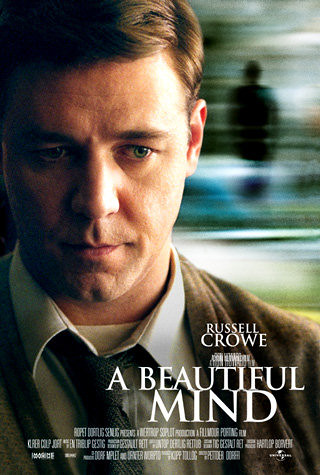
13. **A Beautiful Mind: A Sanitized Genius**
John Nash, the brilliant mathematician, had a truly remarkable and complex life story, one that was brought to the big screen with mesmerizing aplomb by Russell Crowe in “A Beautiful Mind” (2001). The film garnered widespread praise and multiple Academy Awards, presenting a moving narrative of genius battling schizophrenia and finding love and redemption. Yet, beneath its inspirational surface, the screenplay was, shall we say, viciously roasted by critics and historians for its significant inaccuracies.
The film’s most egregious omissions involve Nash’s less savory personal traits and behaviors. It completely glossed over, or outright ignored, his inappropriate sexual escapades, numerous affairs, raging classism, pronounced anti-Semitism, and his neglectful and abusive treatment of his first wife and son. This sanitization created a far more palatable, sympathetic character, streamlining a profoundly complex individual for misleading, “feel-good” purposes, much like “The Greatest Showman” did with P.T. Barnum.
Furthermore, while the movie accurately portrays Nash’s struggles with schizophrenia and mental illness, it invents a key component of his experience. The film depicts him as having vivid visual hallucinations, which, in reality, he never experienced. This dramatic license adds a cinematic flair that simply wasn’t part of Nash’s genuine battle. The film also manufactured a strong, enduring bond with his wife, Alicia Larde, despite their relationship being strained and, at times, abusive.
Historical accounts confirm that the movie didn’t just skirt the truth; it actively downplayed the horrors of domestic violence. Imagine this: John Nash once threw Alicia to the ground and even stepped on her neck at a mathematics department picnic, an act that is decidedly not romantic or indicative of a “strong bond.” Additionally, the film completely ignores Reinhard Selten and John Harsanyi, two other brilliant co-recipients who shared the Nobel Prize with Nash, further diminishing the full scope of his professional life for the sake of a simplified narrative.

14. **Braveheart: The Kilts, The Love, and The Lies**
“Braveheart” (1995) is an absolute classic, a sweeping epic that captured the hearts of millions with its portrayal of Scottish hero William Wallace. It’s renowned for its grand battle scenes, stirring speeches, and a passionate, albeit tragic, love story. But let’s be honest, for all its cinematic glory, when it comes to historical accuracy, it’s a total mess. Screenwriter Randall Wallace himself claimed inspiration from a 15th-century epic poem, which, many experts contend, has very little basis in reality to begin with.
One of the most instantly recognizable, yet utterly wrong, aspects of the film is the iconic imagery of William Wallace and his men wearing kilts and war paint. Here’s the historical mic drop: kilts, as depicted, did not exist at the time of Wallace’s rebellion, and the war paint was a good 300 years off! This visual anachronism is just the tip of the iceberg, as almost the entire timeline presented in the movie is, quite frankly, incorrect.
The film’s timeline bungling extends to pivotal events and characters. Scotland was invaded by England only one year prior to Wallace’s rebellion, not some extended period of oppression as implied. Even more glaring is the portrayal of Isabella of France, who is depicted as an adult having a romantic affair with Wallace. In reality, Isabella was a mere three years old and living in an entirely different country during the pivotal Battle of Falkirk, making the film’s passionate romance a complete fabrication.
The problematic representation extends to Wallace himself. The movie portrays him as a mere commoner, raised by extended family after a personal tragedy, but the real Wallace was not a commoner. The film also conveniently omits his less heroic actions, such as hanging those who refused conscription. And perhaps the biggest myth of all? William Wallace was *not* “Braveheart.” That moniker actually belonged to Robert the Bruce, further proving that this film, despite its epic status, is almost entirely made up, a grand and entertaining fantasy rather than a window into history.
And there you have it, folks! Another deep dive into the cinematic hall of shame, where historical films, despite their noble intentions, often choose drama over documented truth. From noble Scottish warriors in non-existent kilts to genius mathematicians without visual hallucinations, it’s clear that Hollywood has a knack for rewriting the past to make a more “compelling” story. While these movies might entertain and inspire, it’s crucial to remember that a compelling narrative doesn’t always equal an accurate history lesson. So next time you settle in for a biopic, keep your critical eye sharp and maybe, just maybe, do a quick fact-check. You might be surprised at what you uncover beneath the glitter and the glory.



